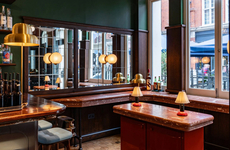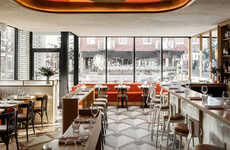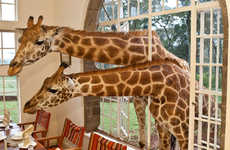
The L'Opéra Restaurant Paris Features Soft Architectural Element
Jana Pijak — April 25, 2012 — Art & Design
References: odbc-paris & archiscene.net
Located in the heart of Paris, the L'Opéra Restaurant is a custom-designed dining space in the world-renowned Opera Garnier. This exclusive eatery was designed by architect Odile Decq who incorporated modern elements into the building's existing historical structure.
Known for her signature use of red hues, the designer brought in bold furnishings and organic spacial elements that did not harm the building's original shell but instead worked alongside it.
The L'Opéra Restaurant features boldly organic forms that resemble melting marshmallows. Enveloping the entire space, this rounded element serves as the interior's main focal point and pulls the dining space together. Mixing a clean white and red palette, Odile Decq creates a dynamic design to remember.
Known for her signature use of red hues, the designer brought in bold furnishings and organic spacial elements that did not harm the building's original shell but instead worked alongside it.
The L'Opéra Restaurant features boldly organic forms that resemble melting marshmallows. Enveloping the entire space, this rounded element serves as the interior's main focal point and pulls the dining space together. Mixing a clean white and red palette, Odile Decq creates a dynamic design to remember.
Trend Themes
1. Organic Architectural Elements - Opportunities exist to incorporate bold and unique organic shapes into architectural designs, creating visually striking spaces.
2. Mixing Modern and Historical - There is potential in blending modern design elements with existing historical structures to create visually stunning and harmonious spaces.
3. Dynamic Design Concepts - Exploring the use of dynamic design concepts, such as bold color palettes and unconventional forms, can create memorable and visually striking dining experiences.
Industry Implications
1. Architecture and Interior Design - Architects and interior designers can leverage organic architectural elements and the blending of modern and historical designs to create unique and visually appealing spaces.
2. Hospitality and Restaurant - Restaurants and hospitality businesses can explore the use of dynamic design concepts to create memorable dining experiences that stand out from competitors.
3. Art and Design Exhibitions - Art and design exhibitions can showcase the innovative use of organic architectural elements and the blending of modern and historical designs as disruptive and visually captivating concepts.
2.6
Score
Popularity
Activity
Freshness























